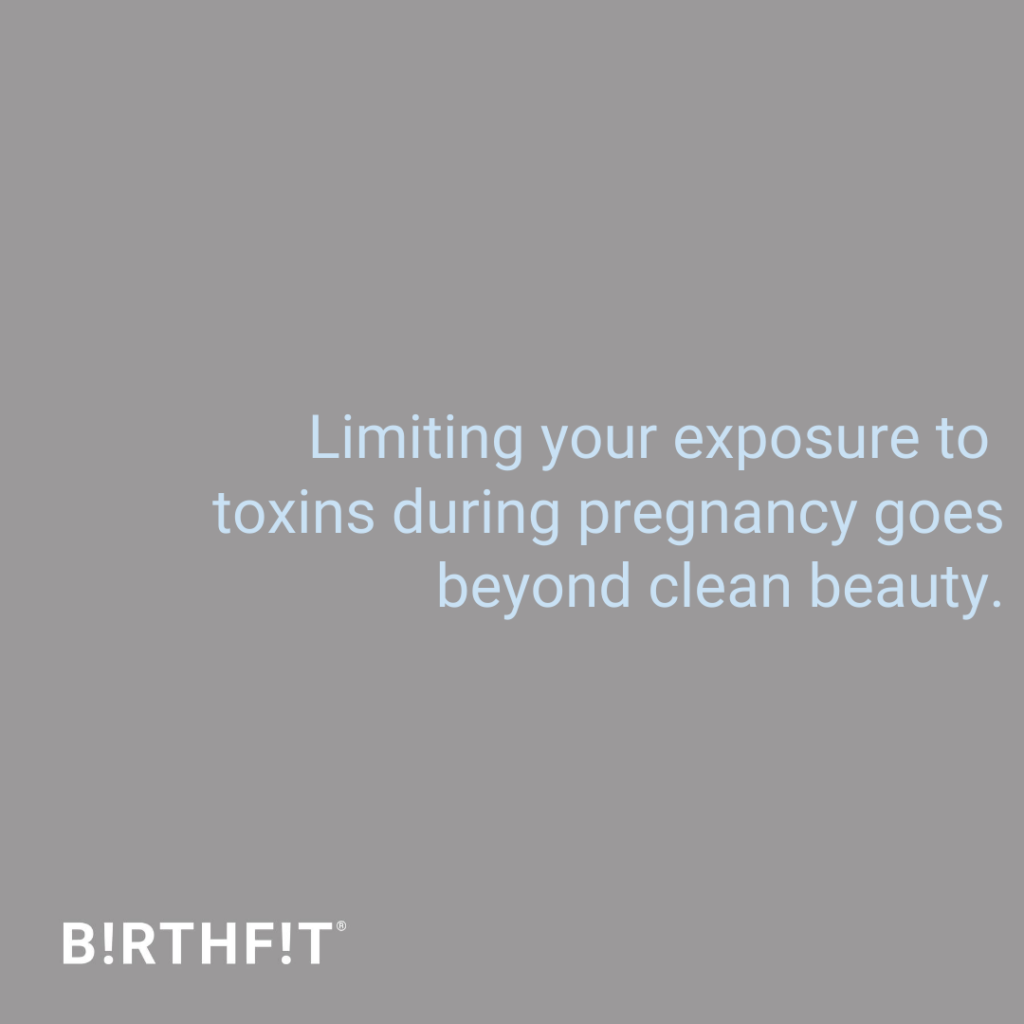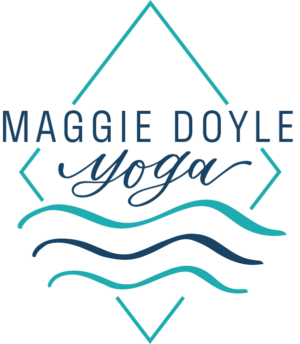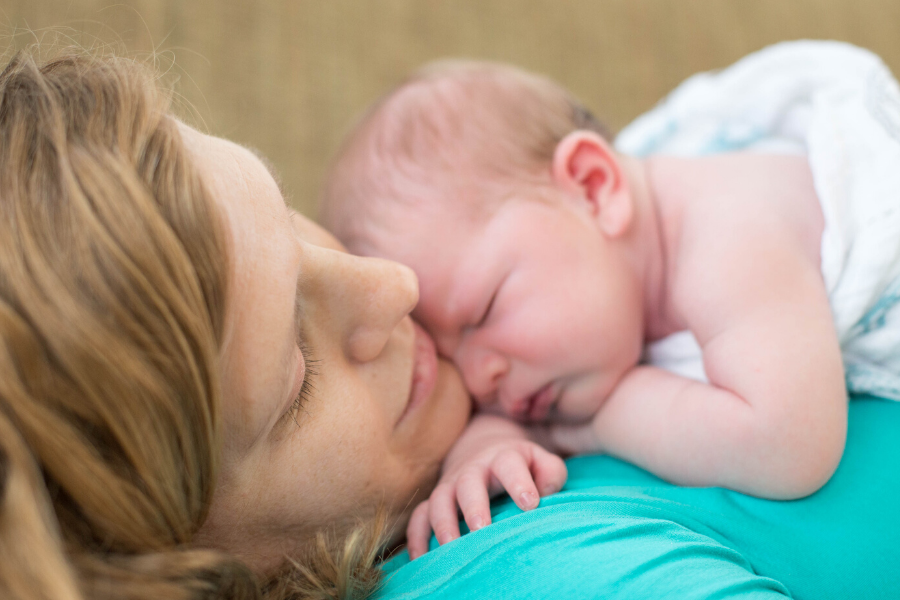
Clean beauty. What is it?
In short, clean beauty includes products made without ingredients that are known to be harmful or questionable. Some refer to it as non-toxic beauty. Clean beauty includes cosmetics and personal care products (shampoo, lotion, body wash, etc.). Surprisingly, the U.S. has very few regulations in regard to the personal care industry. The current regulations were passed in 1938 and only ban 33 ingredients. By comparison, the European Union currently bans 1500 ingredients. With so few regulations, U.S. companies can use any ingredients in their products, even if they are known to be carcinogens or endocrine disruptors.
Does it matter during pregnancy?
Yes. Exposure to chemicals while pregnant increases the risk of the baby having adverse health effects(1). A study published in 2019 showed that exposure in utero and immediately after birth to three chemicals (phthalates, parabens, and the fluorinated compounds known as PFAS) found in household cleaning products, cosmetics, and skincare products, is linked to the diminished lung function of children at six and 12 years of age(2).
Additionally, a 2018 study found that girls who are exposed to these same chemicals before birth may hit puberty earlier than their peers who aren’t exposed in the womb(3). Early puberty has a lot of immediate and long term health effects on girls, including mental health issues and infertility.
According to the Environmental Working Group (EWG), parabens are widely used in cosmetics and have been linked to an increased risk of breast cancer(4). PFAS chemicals have been linked to serious health effects including cancer, thyroid disease, and liver problems. Phthalates are used in fragrance mixtures and in body care products. They’re potent hormone disruptors that can alter the reproductive development of male infants and are associated with sperm damage in adult men. Exposure to hormone disruptors in utero has been found to decrease sperm quality later in life and may lead to an increased risk of testicular cancer(5).
How do these harmful ingredients get from these products to your baby? When you apply the products directly to the skin or they come in contact with the skin, the skin absorbs them and they enter the bloodstream. From there they make it to the placenta, then to the baby via the umbilical cord.
Now it’s time to take a deep breath. This information can be overwhelming, but small changes now can have a big impact quickly. A University of California, Berkeley study showed that when teen girls switched to safer cosmetics, they saw a 27-45% decrease in certain harmful chemicals in their bodies(6). So if you are pregnant, trying to conceive, or recently postpartum, it is not too late to switch to clean beauty.
How do I make the switch to clean beauty?
First, start by identifying which of your current products contain harmful or questionable ingredients. Read the labels and look for ingredients such as parabens, PFAS, fragrance, and phthalates. Beautycounter’s Never List is a great place to start when trying to identify key ingredients to avoid.
Another great resource is EWG’s Skin Deep database. The searchable database gives you a rating on the overall safety of products as well as all of the individual ingredients. A neat feature is that it goes a step further and provides publicly published research on why an ingredient is safe or not.
Once you have identified the products that are harmful or questionable, it is time to start switching out products. You can do this one by one, or, if your budget allows it, all at once. Great brands to consider include Beautycounter, Primally Pure, Innersense, and Earth Mama Organics.
Progress, Not Perfection
Limiting your exposure to toxins during pregnancy goes beyond clean beauty. Other things you can do include saying goodbye to plastic food containers, non-stick cookware, receipts, toxic laundry detergents, toxic cleaning products, and wearing shoes in the house. Even if you cannot change out all of your beauty products at once, even small changes can have a lasting impact. Small changes add up quickly, and once you make one change, others become easier to add on.
These tips are not just for pregnancy. Research has shown that these ingredients also affect the health of adults and teens, not just your unborn babies. With a baby, additional things to think about include their car seat, mattress, diapers, wipes, baby wash and lotions, play surfaces, and toys. Aim for products with fewer and safer ingredients, and consider wood or other natural products for anything that may enter the baby’s mouth (namely, toys).
This post appeared on the BIRTHFIT BLOG
- Woodruff TJ, Zota AR, Schwartz JM. Environmental chemicals in pregnant women in the United States: NHANES 2003–2004. Environ Health Perspect. 2011 https://ehp.niehs.nih.gov/doi/10.1289/ehp.1002727
- Agier, Lydiane et al. Early-life exposome and lung function in children in Europe: an analysis of data from the longitudinal, population-based HELIX cohort. The Lancet Planetary Health, Volume 3, Issue 2, e81 – e92 https://www.thelancet.com/journals/lanplh/article/PIIS2542-5196(19)30010-5/fulltext
- Rapaport, Lisa. Chemicals in cosmetics, soaps tied to early puberty in girls. 3 Dec 2018. https://www.reuters.com/article/us-health-puberty-endocrine-chemicals/chemicals-in-cosmetics-soaps-tied-to-early-puberty-in-girls-idUSKBN1O301I?fbclid=IwAR3gvpta2kvDccasvXeaB0J1pyJma-rPpVEfNBrhVKGiIjNInR8L9ksM3Go
- DIRTY DOZEN ENDOCRINE DISRUPTORS. 28 Oct 2013. https://www.ewg.org/research/dirty-dozen-list-endocrine-disruptors
- Rehman S, Usman Z, Rehman S, et al. Endocrine disrupting chemicals and impact on male reproductive health. Transl Androl Urol. 2018;7(3):490‐503. doi:10.21037/tau.2018.05.17 https://www.ncbi.nlm.nih.gov/pmc/articles/PMC6043754/
- Yang, Sarah. Teen girls see big drop in chemical exposure with switch in cosmetics. 7 Mar 2016. https://news.berkeley.edu/2016/03/07/cosmetics-chemicals/

